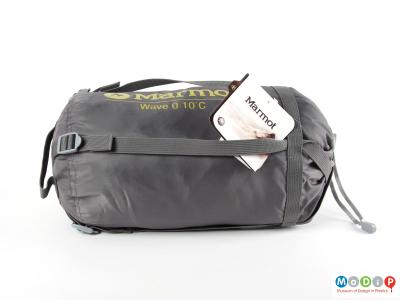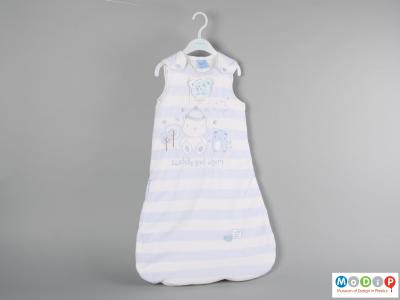The use of man-made fibres help to make our sleeping hours more comfortable. Originally developed by a NASA research centre in the 1960s with the aim of improving the safety of aircraft seats, Memory Foam has subsequently been developed for use in mattresses and pillows. With added chemicals the polyurethane foam has an increased viscosity and density. Higher density memory foams soften in reaction to body heat enabling it to rapidly mould to body shape. Lower density memory foams are pressure sensitive and regain their shape when pressure is removed. It is particularly suitable in medical applications where its use can help to relieve pressure and its warmth retaining properties to assist with pain relief. This example (1) is constructed with the addition of air pockets to increase air flow which reduces temperature and facilitates restful sleep.
Sleeping bags are available for a range of situations, offering light summer warmth or protection from extreme cold. This mummy style sleeping bag (2) is filled with Spirafil™ which is a blend of large, hollow spiral fibres and small polyester fibres for warmth, softness and compressibility. The outer shell of the bag is made from polyamide which is wind resistant and performs well in wet conditions. The bag is very lightweight and compacts easily for carrying.
Polyester can be processed into soft fibres and woven into lightweight fleece or fabric. It is easily laundered and this, combined with its soft and cosy texture, makes it a popular choice for sleepwear (3). This sleep bag is also lightly padded with a filling of polyester fibre. Sleeping bags such as these have a tog or thermal performance rating, just like a duvet, and must conform to safety standards for infants.



